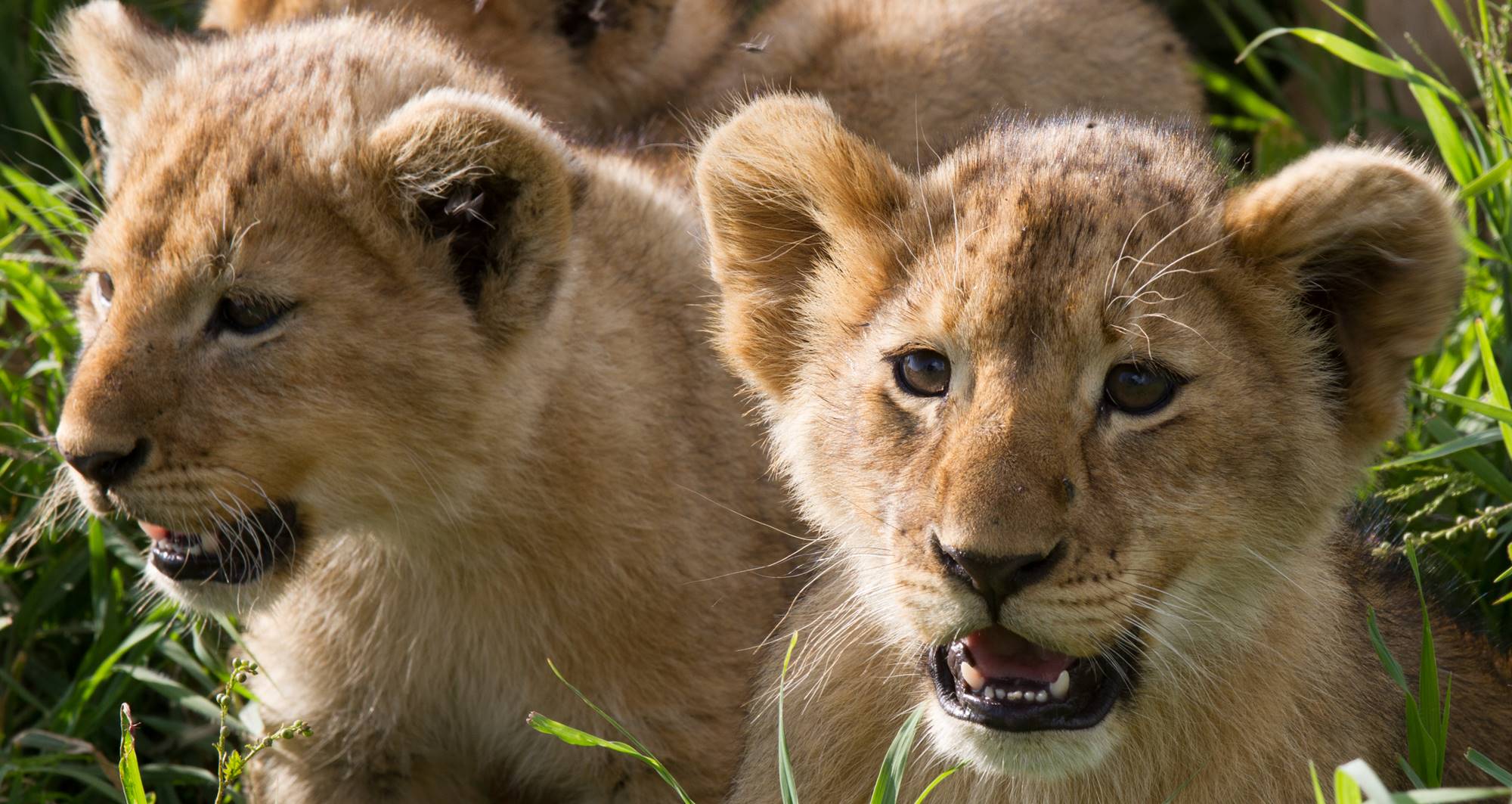Tanzania
The Serengeti’s golden plains host the Great Wildebeest Migration, one of nature’s most awe-inspiring spectacles. This renowned national park, together with other iconic sights such as the Ngorongoro Crater, forms the heart of the ever-popular ‘northern circuit’.
Venture further south to escape the crowds and discover the rugged wilderness of Ruaha, known for its elephants, big cats, and giant baobabs. Nearby, picturesque Nyerere National Park offers a great variety, from tranquil mornings floating down the Rufiji River, to traditional game drives, walks, or immersive fly-camping experiences. These southern parks pair wonderfully with the Spice Island of Zanzibar, just off the coast, offering a perfect blend of wilderness and beach retreat.
Head west to explore Katavi and Gombe, and the stunning Mahale Mountains, which slope down to the shores of Lake Tanganyika. This unique setting is ideal for trekking adventures, including the chance to see chimps on the forested slopes.
Tanzania is an astounding destination, blessed with dramatic scenery and year-round wildlife. With such a rich array of experiences, you are truly spoilt for choice.
An Extraordinary Wild Haven.
TANZANIA JOURNEY INSPIRATION
Our travel network specialises in tailormade holidays. Below you’ll find some examples, with price guide, using destinations and camps/lodges which we think work well together. There are many combinations possible so this is just to give you some initial ideas.
When you are ready to explore options more fully, please do complete an enquiry form – we can then put you in touch directly with the relevant specialist partner team. In discussion with you, they will tailor an itinerary based around your interests and your budget.

Enjoy a southern Tanzania safari before heading off to the beaches of Zanzibar. This is wonderful choice for repeat visitors to Africa, looking for somewhere new to explore, or for those who are keen to get off-the-beaten track and do something a bit different.
Nyerere National Park is vast and remote, and less well-known than the wildlife areas of Northern Tanzania. Only a handful of camps/lodges operate here. The wildlife is diverse and rewarding, sustained by the Rufiji River Delta, and the scenery is spectacular. There is an opportunity to explore by 4×4 vehicle, as well as on foot and by boat, a real highlight.
With picture-perfect beaches, and a rich history, culture, geography and atmosphere like no other, Zanzibar is a fascinating place to spend some time following your safari.
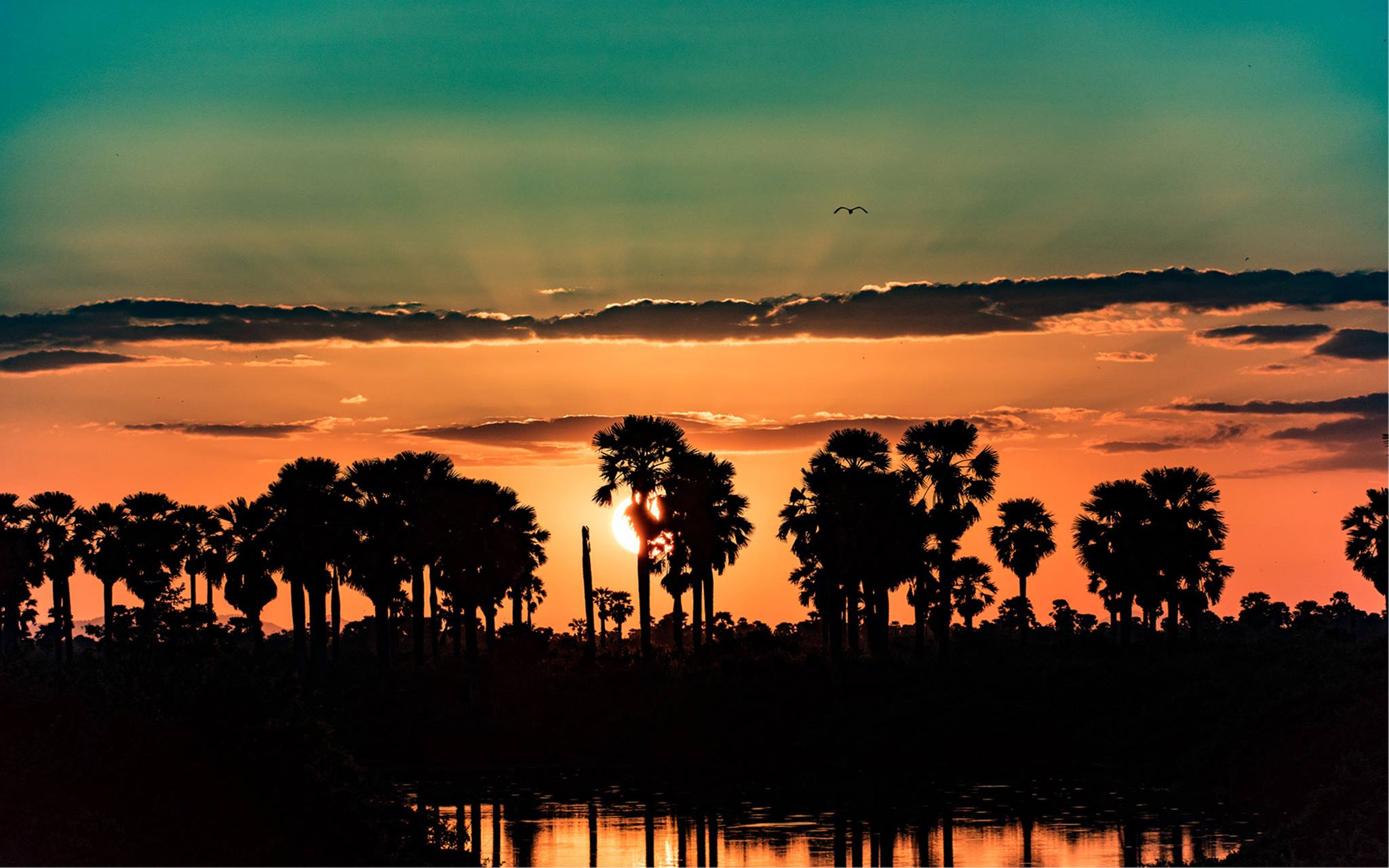 Days 1-4 Selous Impala Camp, Nyerere National Park Fly to Nyerere National Park (formerly known as Selous Game Reserve). On arrival you will be met by a Selous Impala Camp guide. The game drive to camp is around 45 minutes from the airstrip, depending on what you see along the way of course. This is a really lovely small and relatively simple tented camp, set on the edge of the Rufiji River. You can expect good guiding, and good food. Over the coming days you can enjoy the magical location and a full range of activities on land and water.
Days 1-4 Selous Impala Camp, Nyerere National Park Fly to Nyerere National Park (formerly known as Selous Game Reserve). On arrival you will be met by a Selous Impala Camp guide. The game drive to camp is around 45 minutes from the airstrip, depending on what you see along the way of course. This is a really lovely small and relatively simple tented camp, set on the edge of the Rufiji River. You can expect good guiding, and good food. Over the coming days you can enjoy the magical location and a full range of activities on land and water.
 Days 5-8 Pongwe Beach Hotel, Zanzibar Today you say goodbye to the bush and set off on your journey to Zanzibar. On arrival, you will be met and transferred to Pongwe Beach Hotel, located on the powdery white sands of the east coast, about an hour from Stone Town. Pongwe beach is protected by an offshore reef. The beach is one of the best in Zanzibar and surrounded by coconut palms. Pongwe is a well-established, relaxed and rustic beach lodge, set in a beautiful location.
Days 5-8 Pongwe Beach Hotel, Zanzibar Today you say goodbye to the bush and set off on your journey to Zanzibar. On arrival, you will be met and transferred to Pongwe Beach Hotel, located on the powdery white sands of the east coast, about an hour from Stone Town. Pongwe beach is protected by an offshore reef. The beach is one of the best in Zanzibar and surrounded by coconut palms. Pongwe is a well-established, relaxed and rustic beach lodge, set in a beautiful location.
Day 9 End of Arrangements
Price Guide
Per person sharing: from £3,260 (based on mid season)
- This itinerary is available June – March
- This trip starts and ends in Dar es Salaam.
Includes
- All domestic flights, airstrip transfers and departure taxes
- Park & conservancy fees
- All game activities
- Full board accommodation and house drinks (on safari); beachfront room half board (at the beach)
International Flights Our partners can book international flights for you as required.
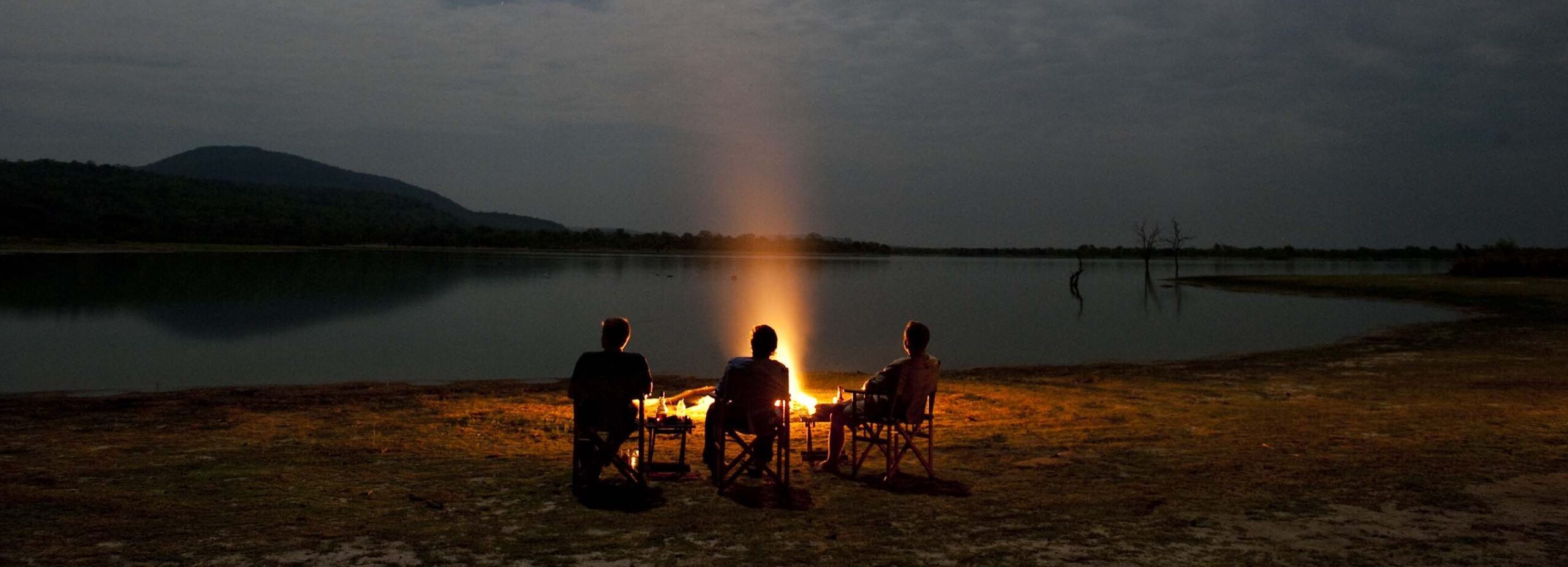 Begin your journey in Southern Tanzania with a scenic flight from Dar, south-west to Nyerere National Park (formerly the Selous Game Reserve). Stay at one of Nyerere’s most famous lodges, originally founded by the guide Richard Bonham. The Rufiji River is at the heart of this vast wilderness and you’ll have the opportunity to cruise the river with an expert guide, as well as enjoying other activities. The lodge has romantic open-fronted thatched cottages, which make the most of the superb setting.
Begin your journey in Southern Tanzania with a scenic flight from Dar, south-west to Nyerere National Park (formerly the Selous Game Reserve). Stay at one of Nyerere’s most famous lodges, originally founded by the guide Richard Bonham. The Rufiji River is at the heart of this vast wilderness and you’ll have the opportunity to cruise the river with an expert guide, as well as enjoying other activities. The lodge has romantic open-fronted thatched cottages, which make the most of the superb setting.
Follow your time on safari with a visit to the island of Zanzibar – a hub for the Spice Trade. Glorious white sand beaches ring the island – many of the best are found on the north and east coasts. Baraza’s architecture and stylish interiors reflect the island’s rich history.
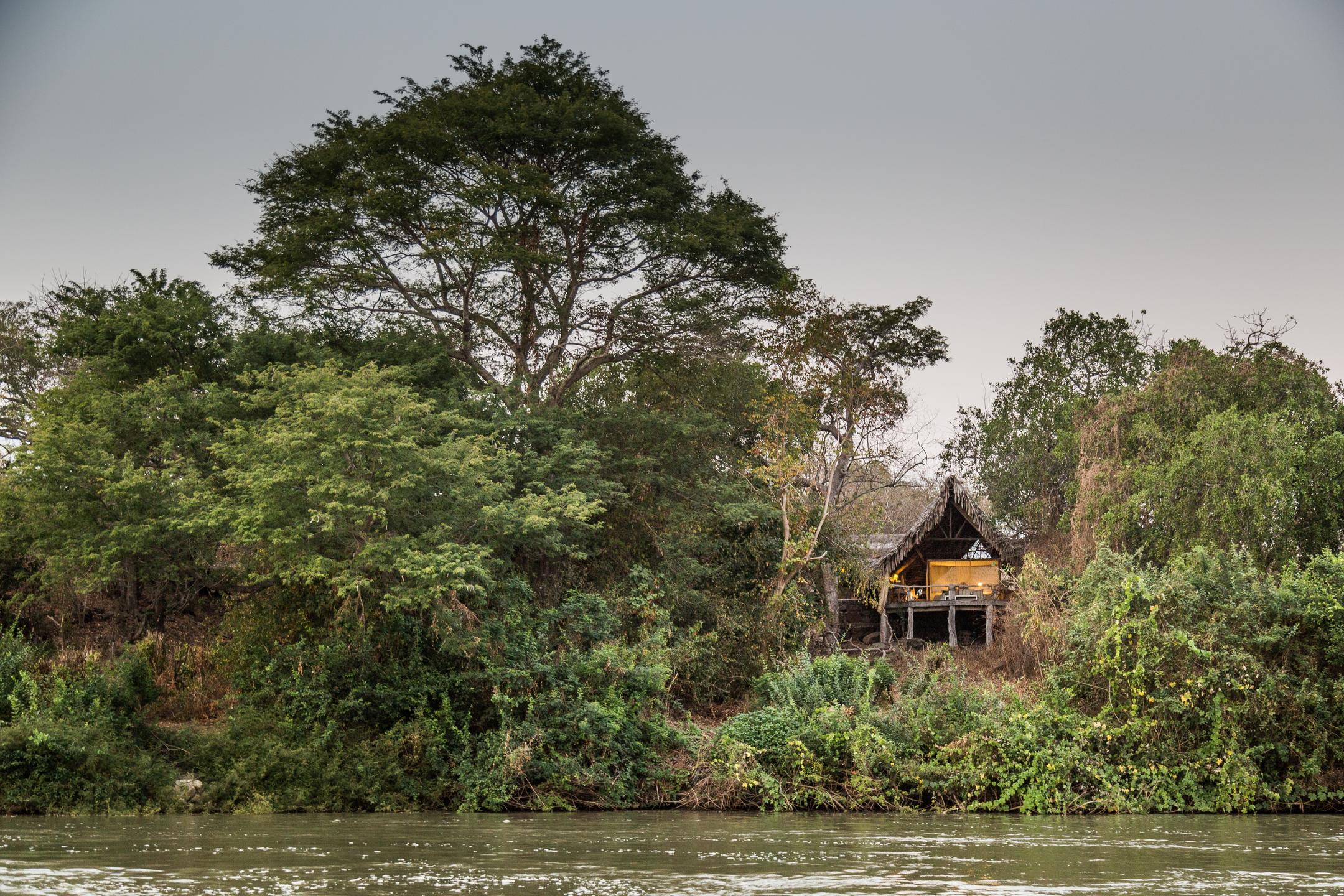 Days 1-4 Sand Rivers, Nyerere National Park Fly from Dar es Salaam to Nyerere National Park. You will be met at Kiba airstrip for the short 15 minute game drive to Sand Rivers. This is a spectacular lodge, perched on a rocky peninsula with commanding views of the Rufiji River. Your days will be filled with a great variety of activities both on land and water with wonderful picnic breakfasts on sand bars and lakesides a real feature of the experience. At the lodge, there is a lovely pool deck overlooking the river – a great spot to cool off in the heat of the day, enjoy a drink and listen to the calls of fish eagles and hippo. Some of the cottages also have their own plunge pools. Wildlife viewing starts in camp! Watch out for hippo making their way back to the river after a night’s grazing, and for monkeys and birds galore.
Days 1-4 Sand Rivers, Nyerere National Park Fly from Dar es Salaam to Nyerere National Park. You will be met at Kiba airstrip for the short 15 minute game drive to Sand Rivers. This is a spectacular lodge, perched on a rocky peninsula with commanding views of the Rufiji River. Your days will be filled with a great variety of activities both on land and water with wonderful picnic breakfasts on sand bars and lakesides a real feature of the experience. At the lodge, there is a lovely pool deck overlooking the river – a great spot to cool off in the heat of the day, enjoy a drink and listen to the calls of fish eagles and hippo. Some of the cottages also have their own plunge pools. Wildlife viewing starts in camp! Watch out for hippo making their way back to the river after a night’s grazing, and for monkeys and birds galore.
 Days 5-8 Baraza Resort & Spa, Zanzibar Your early morning activity and breakfast will lead you to the airstrip in time for your flight to Zanzibar. On arrival in Zanzibar, you will be met and transferred to Baraza Resort & Spa, located on the south-east coast at beautiful Bwejuu–Paje beach. Baraza’s superb location, facilities, luxurious villas, good food and sophisticated hospitality, really make it stand out as a reliable and well-run quality option in Zanzibar.
Days 5-8 Baraza Resort & Spa, Zanzibar Your early morning activity and breakfast will lead you to the airstrip in time for your flight to Zanzibar. On arrival in Zanzibar, you will be met and transferred to Baraza Resort & Spa, located on the south-east coast at beautiful Bwejuu–Paje beach. Baraza’s superb location, facilities, luxurious villas, good food and sophisticated hospitality, really make it stand out as a reliable and well-run quality option in Zanzibar.
Day 9 End of Arrangements
Following breakfast check out. You will be transferred to the airport for your onward journey.
PRICE GUIDE
Per person sharing: from £6,990 (based on mid season)
- This itinerary is available June – March.
- This trip starts and ends in Dar es Salaam.
Includes
- All domestic flights, airstrip transfers and departure taxes
- Park & conservancy fees
- All game activities
- Full board accommodation with house drinks (safari & beach)
International Flights Our partners can book international flights for you as required.
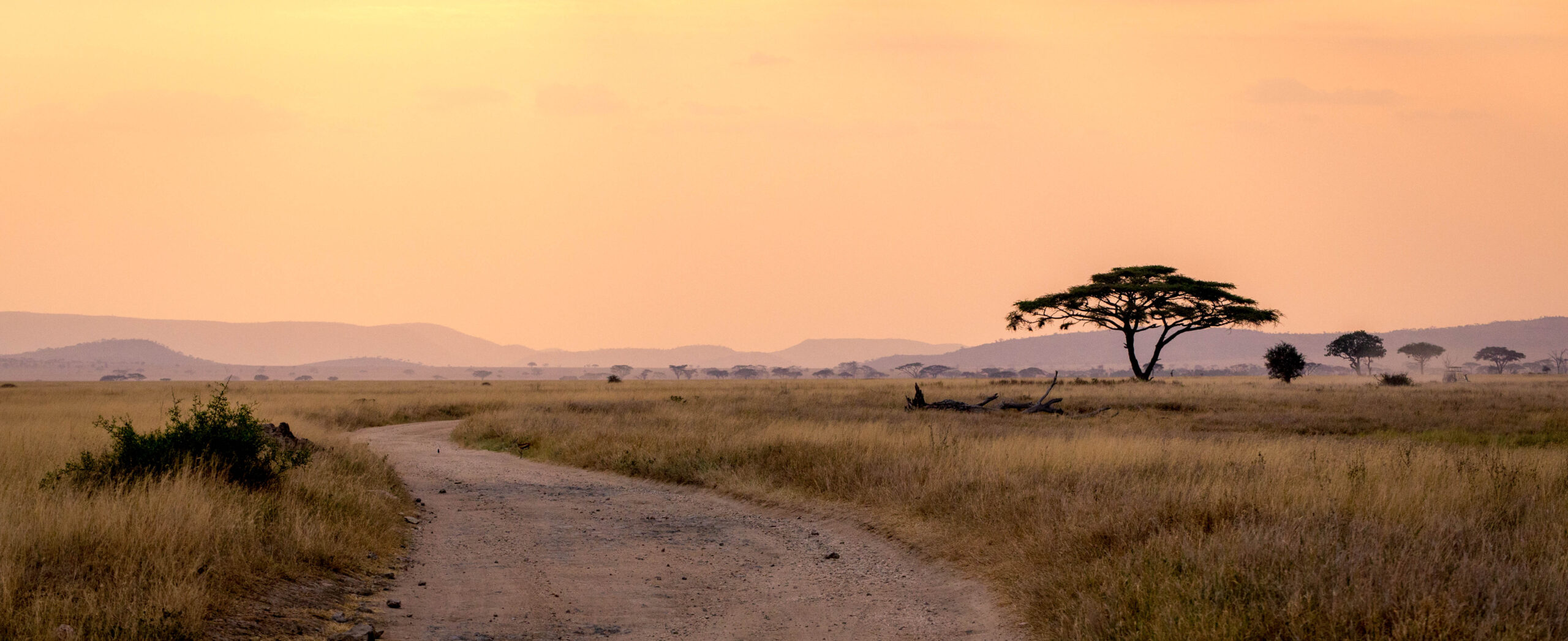 The classic Northern Circuit safari. Begin your journey in Arusha before enjoying spectacular game viewing in both the UNESCO World Heritage Ngorongoro Crater and the iconic Serengeti National Park.
The classic Northern Circuit safari. Begin your journey in Arusha before enjoying spectacular game viewing in both the UNESCO World Heritage Ngorongoro Crater and the iconic Serengeti National Park.
This safari combines brilliantly with the beaches of Zanzibar – please ask if you would like to extend your stay.
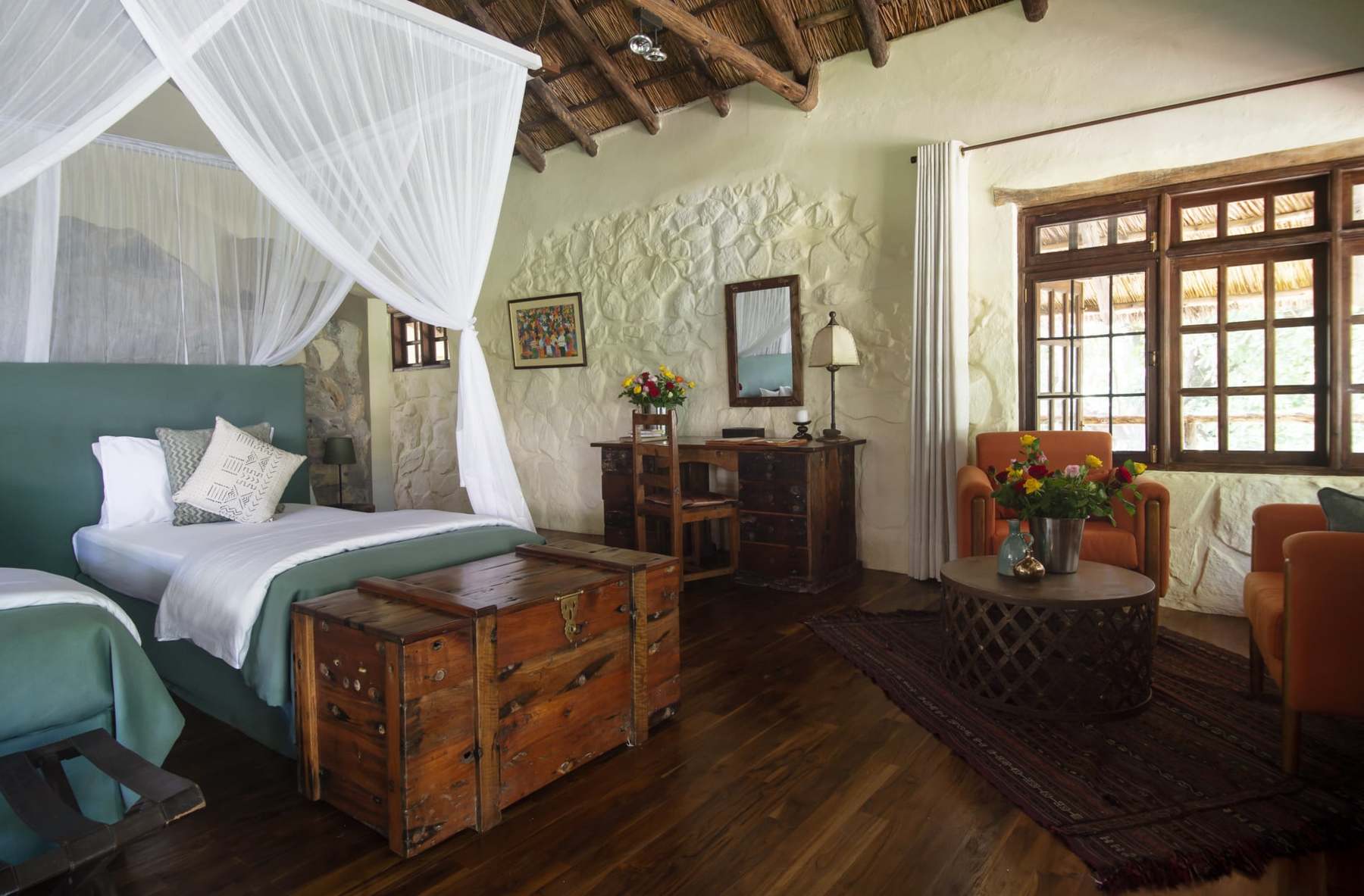 Day 1 Rivertrees Country Inn, Arusha On arrival at Kilimanjaro airport you will be met and transferred to Rivertrees Country Inn, nestled in the foothills of Mt Meru on what used to be a coffee estate. The rest of the day is at leisure.
Day 1 Rivertrees Country Inn, Arusha On arrival at Kilimanjaro airport you will be met and transferred to Rivertrees Country Inn, nestled in the foothills of Mt Meru on what used to be a coffee estate. The rest of the day is at leisure.
 Days 2-3 Ngorongoro Farm House, Ngorongoro Conservation Area Today you will journey to the beautiful Ngorongoro Farm House, positioned just 4km from the Lolduare entrance to the Ngorongoro Conservation Area and putting you in prime position for a sunrise descent of the crater the following morning. The journey to the floor of the Ngorongoro Crater is an epic experience – you follow the narrow switchbacks traversing the 2,000ft walls. Nearly 25,000 animals including rhino and a very healthy population of lion inhabit the crater. Stay for the day, enjoying a picnic lunch.
Days 2-3 Ngorongoro Farm House, Ngorongoro Conservation Area Today you will journey to the beautiful Ngorongoro Farm House, positioned just 4km from the Lolduare entrance to the Ngorongoro Conservation Area and putting you in prime position for a sunrise descent of the crater the following morning. The journey to the floor of the Ngorongoro Crater is an epic experience – you follow the narrow switchbacks traversing the 2,000ft walls. Nearly 25,000 animals including rhino and a very healthy population of lion inhabit the crater. Stay for the day, enjoying a picnic lunch.
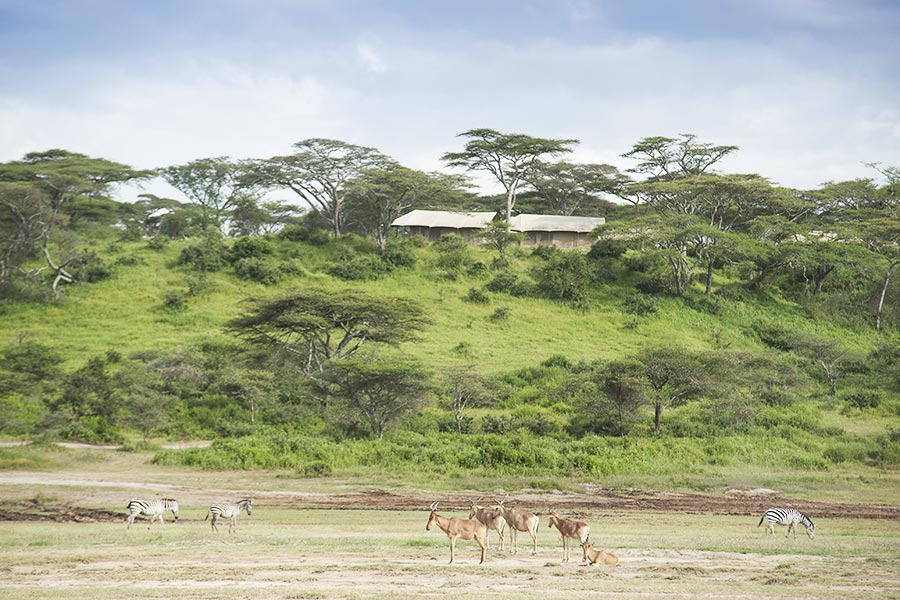 Days 4-7 Nyikani Migration Camp, The Serengeti After breakfast you depart for the Serengeti and your stay at Nyikani – a tented mobile camp, moved seasonally to keep up with the Great Migration. In the early part of the year (Dec-Mar) the camp is positioned in the Ndutu woodlands of the Ngorongoro Conservation Area, to take full advantage of wildebeest calving season. It then moves north (May – Oct) to Kogatende where the migration crosses the Mara river from July time. The camp, with a traditional tented camp atmosphere, is a comfortable base from which to explore the wonders of the Serengeti.
Days 4-7 Nyikani Migration Camp, The Serengeti After breakfast you depart for the Serengeti and your stay at Nyikani – a tented mobile camp, moved seasonally to keep up with the Great Migration. In the early part of the year (Dec-Mar) the camp is positioned in the Ndutu woodlands of the Ngorongoro Conservation Area, to take full advantage of wildebeest calving season. It then moves north (May – Oct) to Kogatende where the migration crosses the Mara river from July time. The camp, with a traditional tented camp atmosphere, is a comfortable base from which to explore the wonders of the Serengeti.
Day 8 End of Arrangements
Enjoy breakfast and a final game drive before returning to Arusha and your onward travel.
PRICE GUIDE
Per person sharing: from £5,150 (based on mid season)
- This itinerary is available all year round although the optimum times are likely to be June – October and December to March.
- This trip starts and ends in Arusha.
INCLUDES
- All domestic flights, airstrip transfers and departure taxes
- Park & conservancy fees
- All game activities
- Full board accommodation on safari, bed & breakfast Arusha
International Flights Our partners can book international flights for you as required.
 With beautiful hand-picked safari lodges, this trip ensures you are perfectly positioned to enjoy the iconic sights and sounds of Tanzania.
With beautiful hand-picked safari lodges, this trip ensures you are perfectly positioned to enjoy the iconic sights and sounds of Tanzania.
Extend your stay with a a few nights on Tanzania’s beaches – ask us about adding Zanzibar to your itinerary for a superb bush and beach holiday.
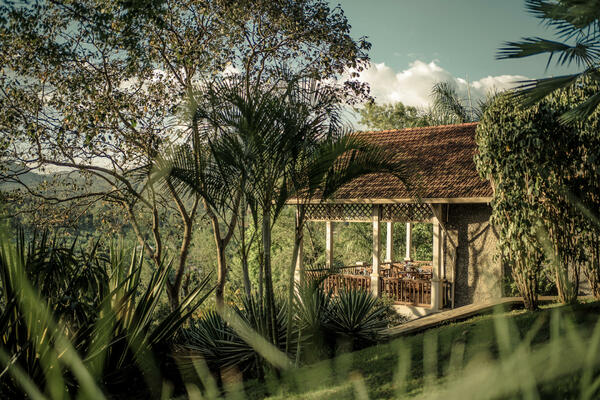 Day 1 Machweo Wellness Retreat, Arusha On arrival at Kilimanjaro airport you will be met and transferred to the sophisticated Machweo Wellness Retreat. Surrounded by lush gardens you can enjoy views of Mount Meru. The estate has three suites and six cottages. There is a lovely pool and lawn bar, and a wellness centre offering relaxing massages and treatments.
Day 1 Machweo Wellness Retreat, Arusha On arrival at Kilimanjaro airport you will be met and transferred to the sophisticated Machweo Wellness Retreat. Surrounded by lush gardens you can enjoy views of Mount Meru. The estate has three suites and six cottages. There is a lovely pool and lawn bar, and a wellness centre offering relaxing massages and treatments.
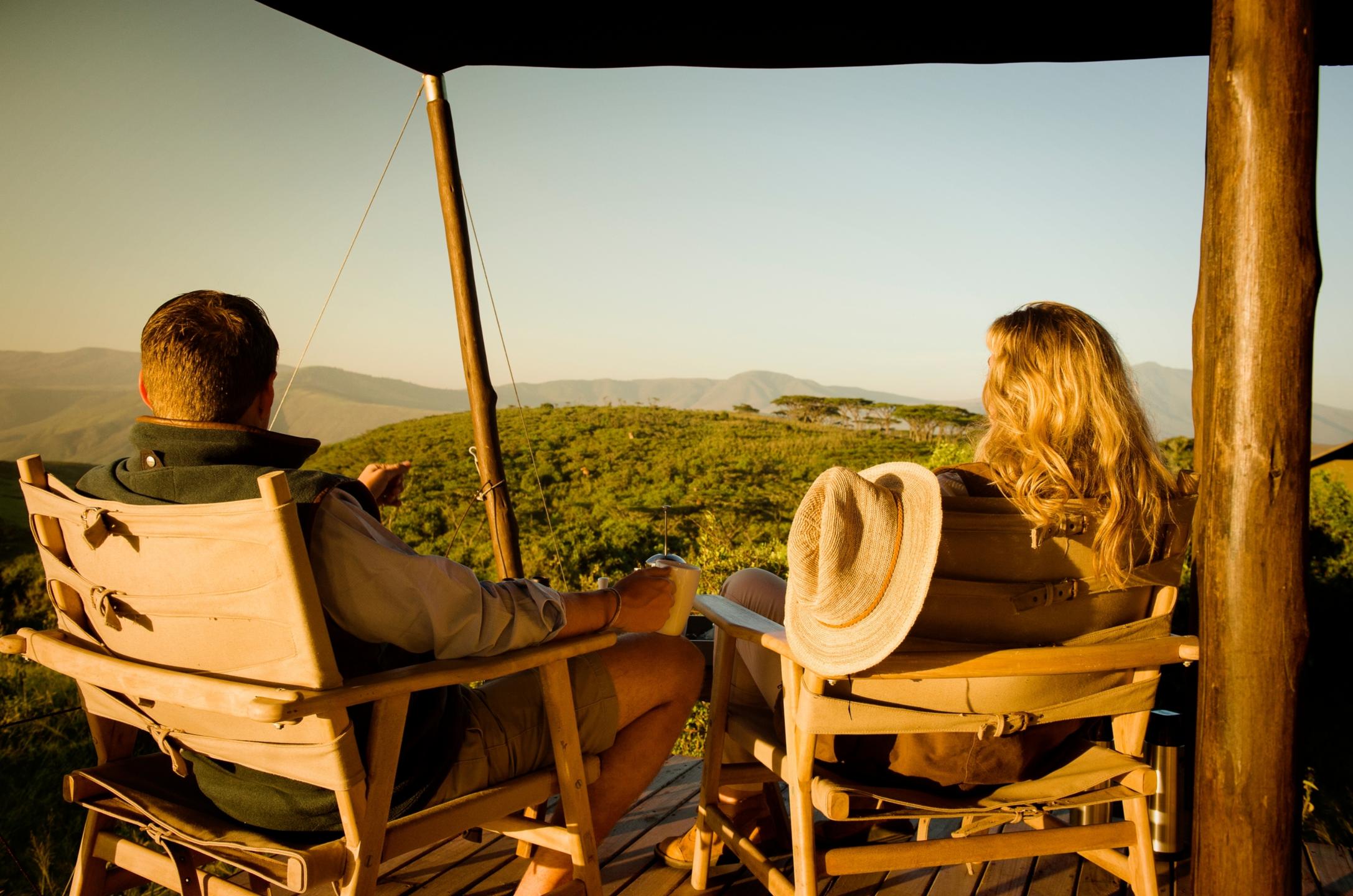 Days 2-3 Entamanu Ngorongoro, Ngorongoro Conservation Area
Days 2-3 Entamanu Ngorongoro, Ngorongoro Conservation Area
Fly to Ngorongoro. On arrival, you will be transferred to Entamanu Ngorongoro, arriving in time for lunch. Entamanu is located on the remote north-west crater rim, accessed via 9km private track. The homestead and its cottages sit at 3,000ft, offering spectacular views from raised wooden decks of the plains surrounding the world’s largest intact caldera. It can get chilly at this altitude but with log fires, sheepskin throws and wool rugs you can enjoy a relaxing stay. The following day at first light you descend the dramatic 2,000ft walls of the Ngorongoro Crater, for a full day exploring this unique ecosystem.
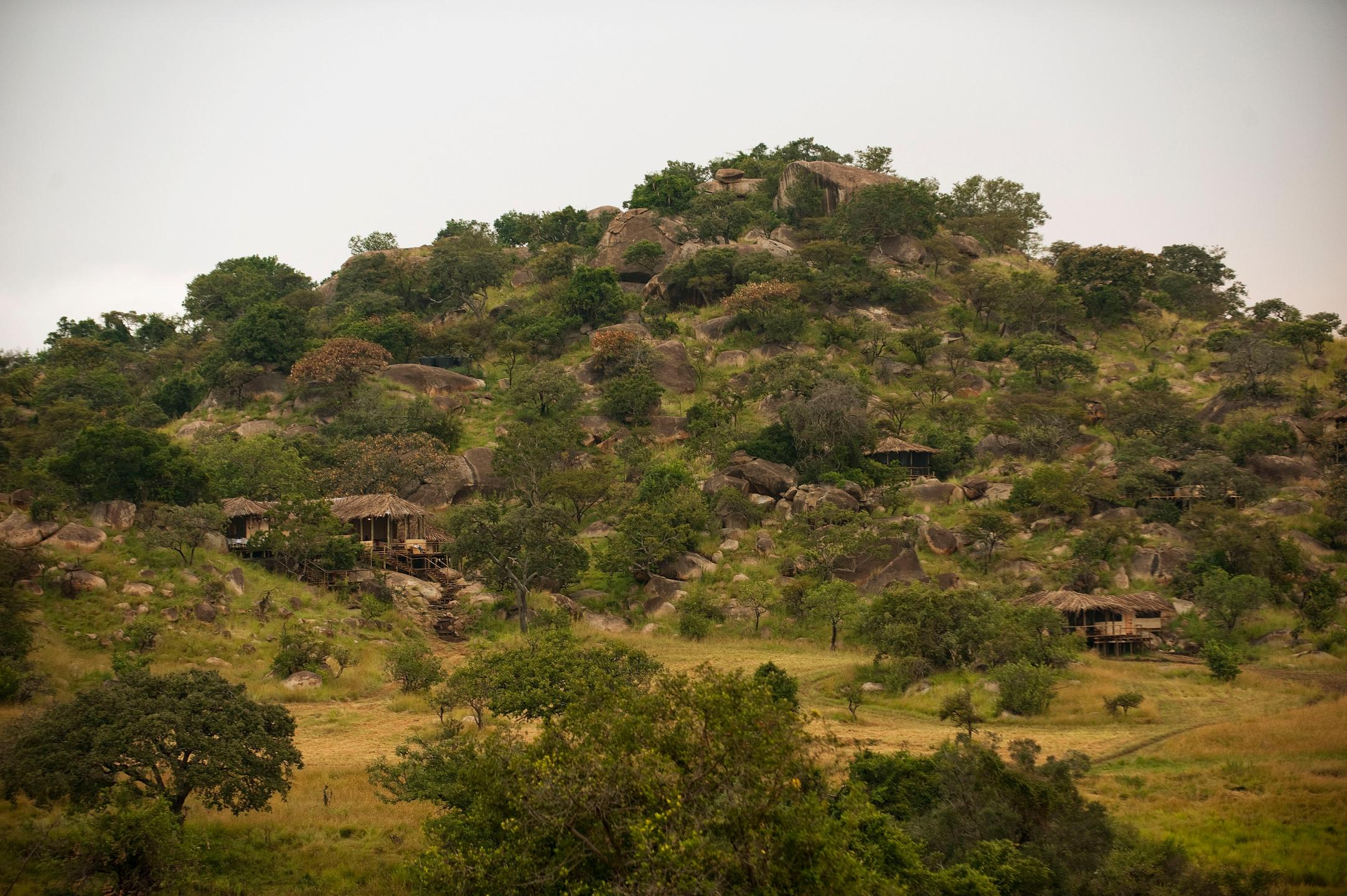 Days 4-7 Lamai Serengeti, The Serengeti
Days 4-7 Lamai Serengeti, The Serengeti
Fly to the Northern Serengeti for a four night stay at Lamai Serengeti, in the prime Kogakuria Kopje area, close to the mighty Mara River. This Lamai Wedge region of the Serengeti offers superb wildlife viewing year-round, although visitor numbers (and prices) peak during Great Migration months. If you want the chance to witness a river crossing then time your stay for mid July-October. Other times of year feel rather exclusive, with fewer visitors (and lower rates). The camp itself is partially tented, set amongst the dramatic boulders. There is also a lovely swimming pool. This is a wonderful place to soak up the sights and sounds of the northern Serengeti while enjoying top hospitality.
 Day 8 End of Arrangements
Day 8 End of Arrangements
Enjoy a game drive back to the airstrip today for your flight to Arusha.
PRICE GUIDE
Per person sharing: from £9,380 (based on mid season)
- This itinerary is available all year round.
- This trip starts and ends in Arusha.
INCLUDES
- All domestic flights, airstrip transfers and departure taxes
- Park & conservancy fees
- All game activities
- Full board accommodation and house drinks on safari. Bed & Breakfast in Arusha.
International Flights Our partners can book international flights for you as required.
TANZANIA GUIDE
You’ll find a short guide to Tanzania below.
To start planning a trip to Tanzania please contact us via the Enquiry Form, by email on info@realworldconservation.org.uk or on 01692 218189.
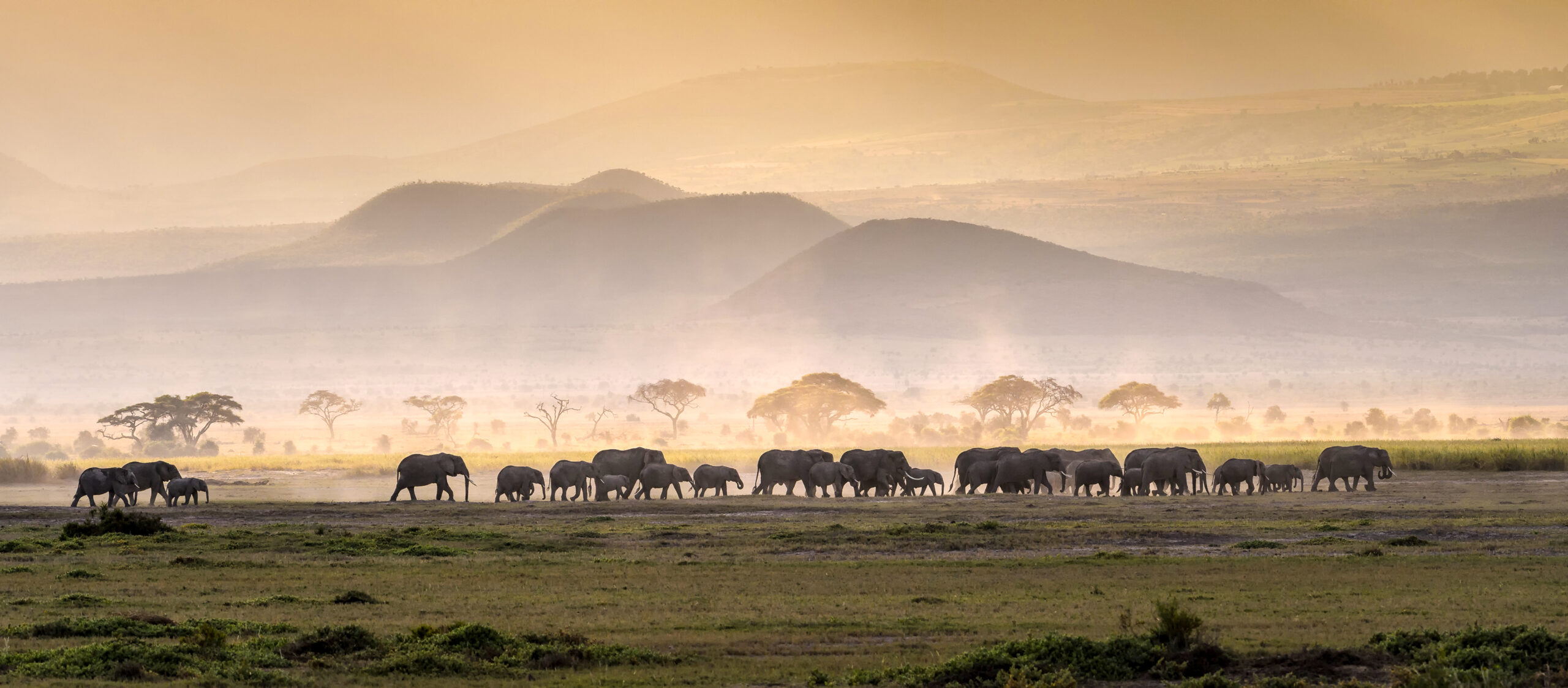
The Serengeti, Tanzania’s largest and most renowned national park, spans more than 14,760 sq kms, stretching all the way to the Masai Mara in Kenya. The park’s vast grasslands, acacia woodland, and iconic kopjes create the archetypal African safari landscape.
Flora and Fauna
The Serengeti hosts an extraordinary diversity of wildlife. Expect to encounter majestic prides of lions, elusive leopards, and swift cheetahs. Herds of elephants and Masai giraffe roam freely, while countless grazing animals from zebra to gazelle dot the plains. A tailormade Tanzania safari offers unparalleled opportunities to witness these magnificent creatures in their natural habitat.
The Great Migration
The Serengeti is most famous for the Great Migration, the largest animal migration on Earth. Over 1,000,000 wildebeest, along with zebras and antelopes, journey in search of fresh grazing. This epic trek involves dramatic river crossings, where the herds face predators including lion and crocodile, making it one of nature’s most thrilling spectacles. The movement of the herds is governed by the weather and the availability of fresh grazing – this is becoming increasingly unpredictable, however you’ll find a provisional timeline below.
Migration Timeline:
- January to March: Southern plains near the Ngorongoro Conservation Area. This period is marked by calving, with most wildebeest giving birth within a three-week window in February. By March, grazing is severely depleted.
- April to May: The long rains prompt a flush of fresh green shoots drawing the herds northwards, towards the central Serengeti.
- June to July: Central and Western Serengeti. The movement of the herds is unpredictable with them often spreading out across the central and western Serengeti into Grumeti – small river crossings are required but nothing to rival the challenge of the Mara River up ahead…
- August to September: Northern Serengeti and Masai Mara. The crossing of the wide and rushing Mara River marks the climax of the migration, with lodges often fully booked many months in advance, particularly in August and September, when the peak of activity is expected. The first herds start to cross The Mara River northward in mid July.
- October to December: Herds return south, moving quickly through the Serengeti to reach the southern plains by January.
Ecosystems and Conservation
The Serengeti is part of a vast protected area that includes the Ngorongoro Conservation Area and the Ikorongo and Maswa reserves, allowing for unhindered animal migrations. Its diverse ecosystems, from the central Seronera to the Grumeti River in the west and remote southern plains, each offer unique wildlife viewing opportunities.
A Serengeti safari offers more than just the Great Migration. The park’s diverse landscapes and abundant wildlife provide endless opportunities year-round.
 The Ngorongoro Conservation Area, a UNESCO World Heritage Site, is one of Tanzania’s most unique and vital conservation regions. Spanning over 8,292 square kilometers, it integrates wildlife preservation with the coexistence of indigenous Maasai communities, offering a model for responsible tourism and sustainable wildlife management.
The Ngorongoro Conservation Area, a UNESCO World Heritage Site, is one of Tanzania’s most unique and vital conservation regions. Spanning over 8,292 square kilometers, it integrates wildlife preservation with the coexistence of indigenous Maasai communities, offering a model for responsible tourism and sustainable wildlife management.
The Crater: A Natural Wonder
At the heart of the Ngorongoro Conservation Area lies the Ngorongoro Crater, the world’s largest inactive, intact, and unfilled volcanic caldera. Formed about two to three million years ago, the crater is 610 meters deep and its floor covers 260 sq kms. This natural enclosure is a sanctuary for an array of wildlife, providing a unique opportunity to observe a dense population of animals in a relatively confined space.
Wildlife Diversity
The Ngorongoro Crater and its surrounding highlands boast an extraordinary variety of wildlife. Visitors can expect to see:
- Big Cats: Lions, leopards, and cheetahs are common sights, with the crater floor home to one of the highest densities of lions in the world.
- Elephants: Often seen in the Lerai Forest, the area’s old bulls are particularly famous for their impressive tusks.
- Black Rhinos: Ngorongoro is one of the few places in Tanzania where you can see the critically endangered black rhino in its natural habitat.
- Herbivores: Large herds of wildebeest, zebras, and gazelles roam the plains, while buffalo and hippos enjoy the wetland areas.
- Birdlife: The area supports over 500 bird species, making it a birdwatcher’s paradise.
The conservation area is open dawn to dusk (6am – 6pm) although the gates to the crater floor are closed at 4pm. We usually book a 2 night stay for our guests in the Ngorongoro area allowing for a sunrise descent into the crater and a full day with picnic lunch before returning to their camp/lodge.
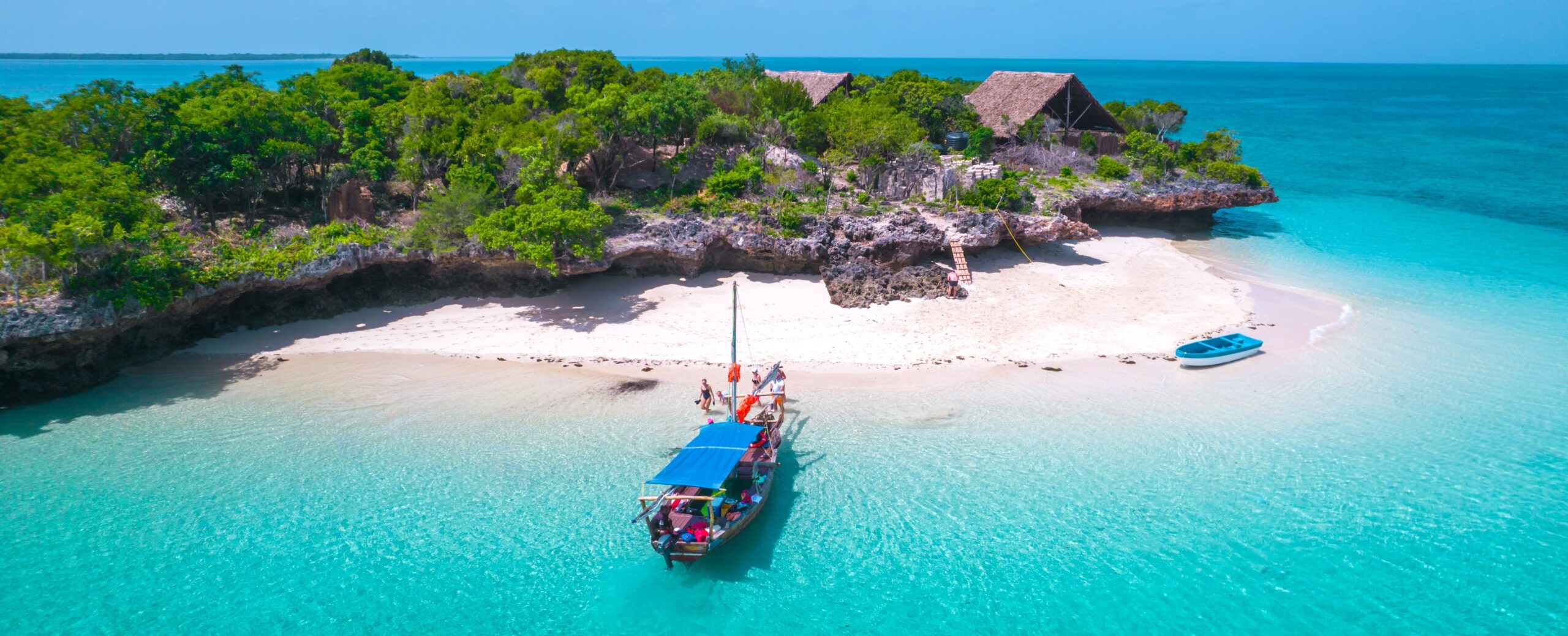
Overview The Spice Islands are the name given to the palm-fringed islands located off the coast of Tanzania, the largest of which are Zanzibar, Pemba, and Mafia Islands. These islands each have their own attractions, from stunning beaches, rich cultural heritage, and vibrant marine life.
Zanzibar Island
Unique Features and Scenery Zanzibar, the most famous of the Spice Islands, is known for its idyllic white-sand beaches and crystal-clear turquoise waters. The island’s capital, Stone Town, is a UNESCO World Heritage Site, celebrated for its winding streets, bustling markets, and historic architecture that reflects a blend of Arab, Persian, Indian, and European influences. It’s an atmospheric place to spend time.
Cultural and Historical Highlights Stone Town is a must-visit, offering a rich tapestry of history and culture. Key attractions include the Sultan’s Palace, the Old Fort, and the House of Wonders, although one of the great pleasures is just wandering the maze of narrow streets and seeing where you end up! Just make sure you plan your walking tour for the cool of the early morning or late afternoon. The bustling Darajani Market provides a sensory overload of sights, sounds, and smells, offering a true taste of local life. Stone Town can be visited as a day trip although it is beneficial to have a night there, most conveniently on arrival or departure from the island. There are several rooftop bars / restaurants – the perfect place for a sundowner and to watch the dhows sail by.
Activities Visitors to Zanzibar can indulge in a variety of activities, from visiting Stone Town to relaxing on pristine beaches, diving and snorkelling. Zanzibar is also known for its spice tours, where travellers can explore aromatic spice plantations and learn about Zanzibar’s historical role in the global spice trade, a popular past-time for those staying longer than a few days.
Accommodation Most people will spend the majority of their time on Zanzibar at the beach. There are many options to choose from ranging from rustic, small beach lodges, to luxurious resorts with watersports and tennis courts. There has been quite a lot of development in recent years but the best beaches are generally regarded to be those in the south-east, north-east and far north-west coasts, about an hour’s drive away from Stone Town. Mnemba Island off the northern tip offers some of the best snorkelling/diving and is home to one luxury resort.
Wildlife The endangered Zanzibar red colobus monkey lives in Jozani Chwaka Bay National Park with tours possible although you may also see red colobus around certain beach resorts/lodges. Marine life includes dolphins and turtles with many places offering dolphin watching, sailing, marine safaris and snorkelling trips.
Pemba Island
Unique Features and Scenery Pemba Island, often referred to as ‘The Green Island’ due to its lush, hilly landscape, offers a more tranquil and less commercialised experience compared to Zanzibar so it’s worth the extra travel time to get there for those after something a bit different. The island’s fertile land is dotted with clove plantations and dense forests, providing a serene and verdant backdrop while there are some wonderful places to stay, including romantic Fundu Lagoon.
Diving and Marine Life Pemba is a haven for diving enthusiasts, boasting some of the most pristine and vibrant coral reefs in the region. The Pemba Channel, with its deep waters and strong currents, attracts a diverse array of marine life, including sharks, rays, and turtles. The island’s underwater scenery is truly spectacular, making it a top destination for scuba diving and snorkelling.
Activities and Experiences In addition to diving, visitors can explore the island’s lush interior, visit traditional villages, and enjoy bird watching in the Ngezi Forest Reserve. The island’s secluded beaches and clear waters also offer excellent opportunities for kayaking and paddle boarding.
Mafia Island
Unique Features and Scenery Mafia Island, the smallest and least developed of the Spice Islands, offers an unspoiled and peaceful escape with quiet sand roads, tumbled down ruins and lush vegetation . The island is encircled by mangroves and is part of the Mafia Archipelago, surrounded by the Mafia Island Marine Park, which protects a rich variety of marine habitats.
Marine Life and Conservation Mafia Island is renowned for its exceptional marine biodiversity. The marine park is home to over 400 species of fish and numerous coral varieties, making it a prime spot for snorkelling and diving. The island is also one of the best places in the world to swim with whale sharks, especially between October and March.
Activities and Experiences Beyond its underwater attractions, Mafia Island offers opportunities for deep-sea fishing, sailing, and exploring its mangrove forests and sandbanks. The island’s laid-back atmosphere and friendly locals provide a genuine sense of hospitality and tranquillity.
Combining the Spice Islands
The islands work brilliantly in combination with safari or as a stand alone beach holiday. Zanzibar airport handles flights from various major cities in Europe, the Middle East, and Africa, making it very accessible and easy to build into an itinerary. Additionally, Zanzibar’s proximity to Dar es Salaam, (just a 20 minute flight away), allows for convenient connections to further international destinations and safari areas.
 Mahale Mountains National Park
Mahale Mountains National Park
Overview Rising steeply over 8,000 feet above the eastern shore of Lake Tanganyika, the Mahale Mountains National Park is a stunning blend of white sand beaches, clear waters, and rugged peaks. This remote and beautiful park offers a thrilling, off-the-beaten-path adventure for those seeking a truly wild experience.
Access and Accommodation Getting to Mahale Mountains National Park requires some resolve and a large wallet! It involves a 4-5 hour light aircraft flight from Arusha, making it an exclusive (and often expensive) journey. There are also connections from Ruaha, Serengeti and Katavi. However, the effort is rewarded with an unparalleled sense of seclusion and natural beauty. Accommodations are limited to a few luxurious lodges and tented camps including the wonderful Greystoke Mahale (pictured), providing an intimate but very comfortable stay amidst the wilderness.
Chimpanzee Trekking The primary attraction of Mahale is its population of around 1,000 chimpanzees. Visitors can experience unforgettable encounters with the Mimikire or ‘M’ clan, which has been habituated since the mid-1960s through a Japanese research project. Guided treks offer the chance to observe these primates up close, witnessing their social interactions and behaviours.
Other Wildlife In addition to chimpanzees, the park is home to other primates such as colobus monkeys, baboons, and vervet monkeys. The forested slopes also host a variety of bird species and smaller mammals, adding to the biodiversity of the region.
Best Time to Visit Chimpanzee trekking is available most times of the year, except during the heavy rains in April and May. The optimal time to visit is from July to October, at the end of the dry season, when chimpanzees descend to the lower slopes in search of their favourite fruits, and the forest paths are dry and firm. At other times the trekking can be challenging.
Katavi National Park
Overview Katavi National Park, Tanzania’s third largest but one of its least known parks, offers a classic dry-season safari experience. Located in Western Tanzania, it is a remote haven for wildlife, drawing fewer visitors and providing an exclusive wilderness adventure.
Wildlife and Activities During the dry season, wildlife is concentrated around the Katuma and Kapapa rivers, creating excellent opportunities to observe elephants, lions, giraffes, zebras, and buffalo. Although leopards are present, they are notoriously elusive in this region. There are no rhinos in Katavi, but the variety of other species ensures a rich safari experience. Accommodations include lovely permanent small camps such as Chada, Katavi Wildlife, and Mbali Mbali.
Gombe Stream National Park
Overview Gombe Stream National Park, located along Lake Tanganyika, is the smallest of Tanzania’s national parks but holds significant importance due to Jane Goodall’s pioneering chimpanzee research. This park offers intimate and enriching wildlife experiences although perhaps lacks the dramatic scenery of the Mahale Mountains.
Wildlife and Activities Gombe is renowned for its chimpanzee trekking, allowing visitors to track and observe these primates in their natural habitat. The park also features other primates like olive baboons and red-tailed monkeys, along with diverse birdlife. Nature walks and boat trips on Lake Tanganyika add to the allure of this small but fascinating park.
Conclusion
Western Tanzania’s Mahale Mountains, Katavi, and Gombe Stream National Parks offer unique and unforgettable wildlife experiences in some of Africa’s most remote and pristine landscapes.


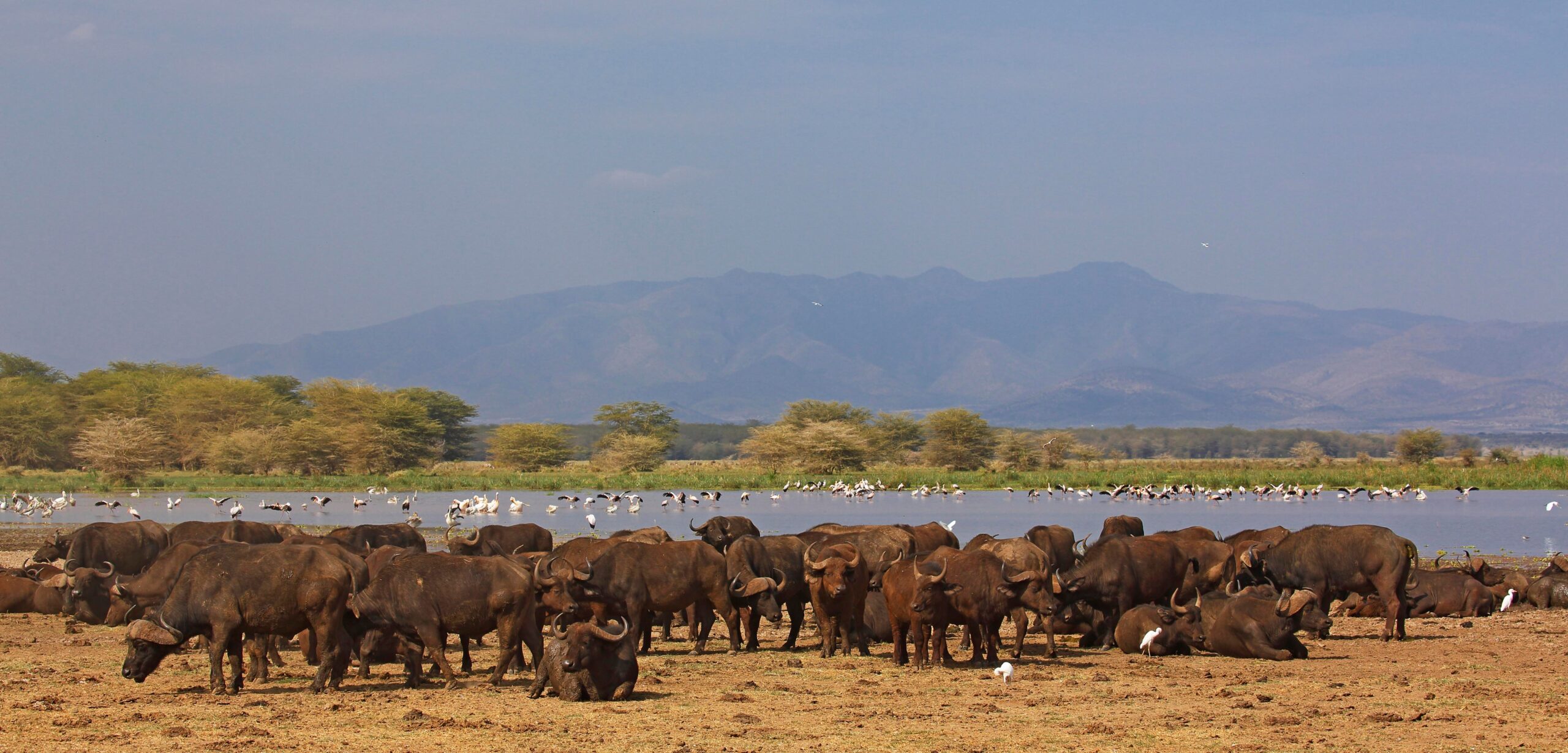 Tarangire National Park
Tarangire National Park Overview Ruaha National Park offers an extraordinary safari experience for those willing to venture off the traditional paths. While it requires more effort to reach Ruaha, compared to the northern parks, the journey is well worth it. Visitors are rewarded with an authentic African safari in a vast, untouched wilderness.
Overview Ruaha National Park offers an extraordinary safari experience for those willing to venture off the traditional paths. While it requires more effort to reach Ruaha, compared to the northern parks, the journey is well worth it. Visitors are rewarded with an authentic African safari in a vast, untouched wilderness. Overview Nyerere National Park, formerly part of the Selous Game Reserve, is situated in southeast Tanzania and represents the largest wildlife reserve in Africa, covering over 50,000 square kms. Encompassing 5% of Tanzania, this vast wilderness offers a unique and special safari experience. It is the top north-east corner which has been calved out for eco-tourism with the remaining portion split into hunting blocks.
Overview Nyerere National Park, formerly part of the Selous Game Reserve, is situated in southeast Tanzania and represents the largest wildlife reserve in Africa, covering over 50,000 square kms. Encompassing 5% of Tanzania, this vast wilderness offers a unique and special safari experience. It is the top north-east corner which has been calved out for eco-tourism with the remaining portion split into hunting blocks.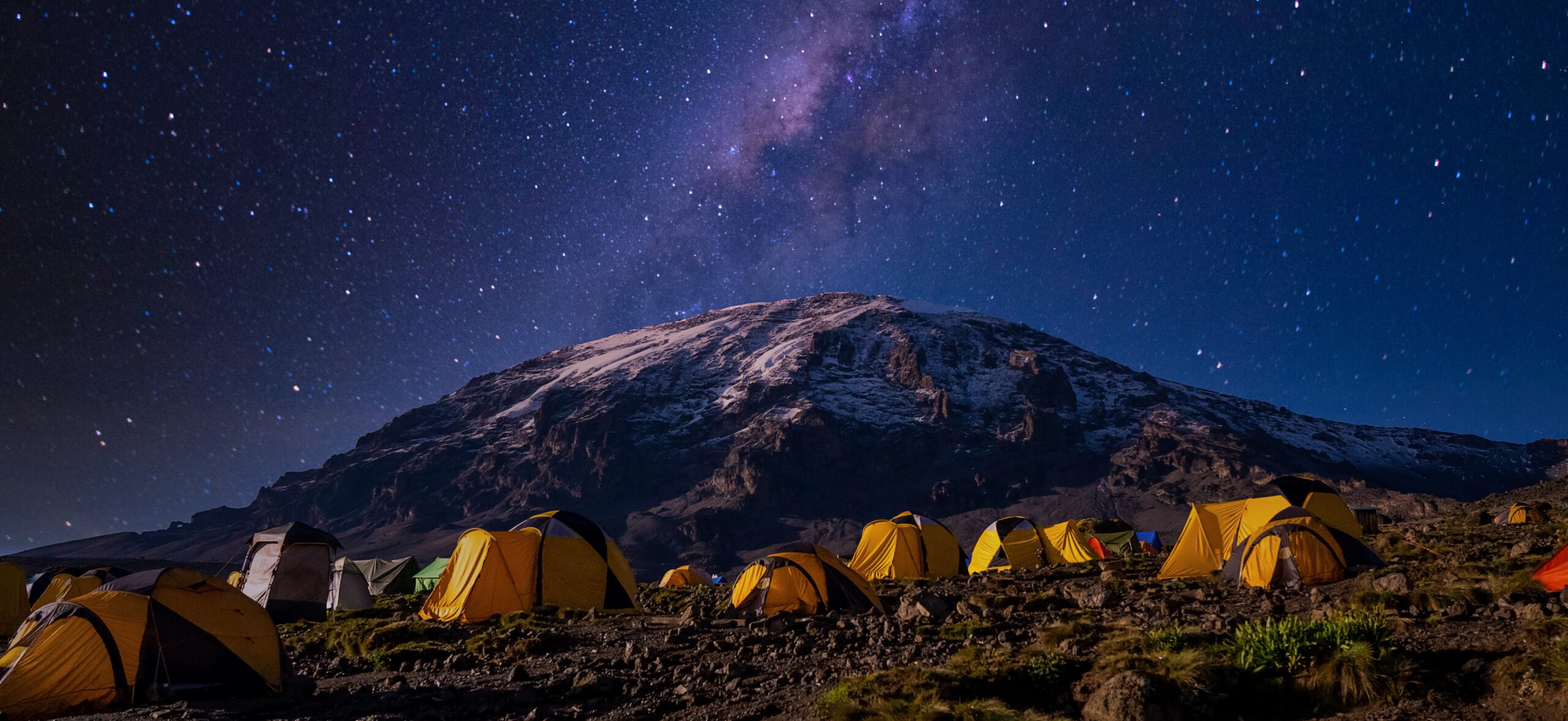 Overview Located in northern Tanzania between the Moshi River and the Kenyan border, Mount Kilimanjaro stands as Africa’s highest peak at 5,895 meters (19,341 feet), earning it the title “Roof of Africa.” Kilimanjaro National Park, covering the area above 2,700 meters, offers diverse terrain and a unique climbing experience. The local Chagga people regard the mountain as a powerful life force.
Overview Located in northern Tanzania between the Moshi River and the Kenyan border, Mount Kilimanjaro stands as Africa’s highest peak at 5,895 meters (19,341 feet), earning it the title “Roof of Africa.” Kilimanjaro National Park, covering the area above 2,700 meters, offers diverse terrain and a unique climbing experience. The local Chagga people regard the mountain as a powerful life force. Overview Witnessing the Great Migration in Tanzania’s Serengeti is one of the world’s most incredible wildlife spectacles. This approximately 1,000 km journey involves over 1.5 million wildebeest, zebras, and antelopes traversing the UNESCO World Heritage Serengeti ecosystem. Pursued by predators such as lions, leopards, hyenas, and cheetahs, the migration offers a breathtaking and dramatic display of nature’s raw power.
Overview Witnessing the Great Migration in Tanzania’s Serengeti is one of the world’s most incredible wildlife spectacles. This approximately 1,000 km journey involves over 1.5 million wildebeest, zebras, and antelopes traversing the UNESCO World Heritage Serengeti ecosystem. Pursued by predators such as lions, leopards, hyenas, and cheetahs, the migration offers a breathtaking and dramatic display of nature’s raw power.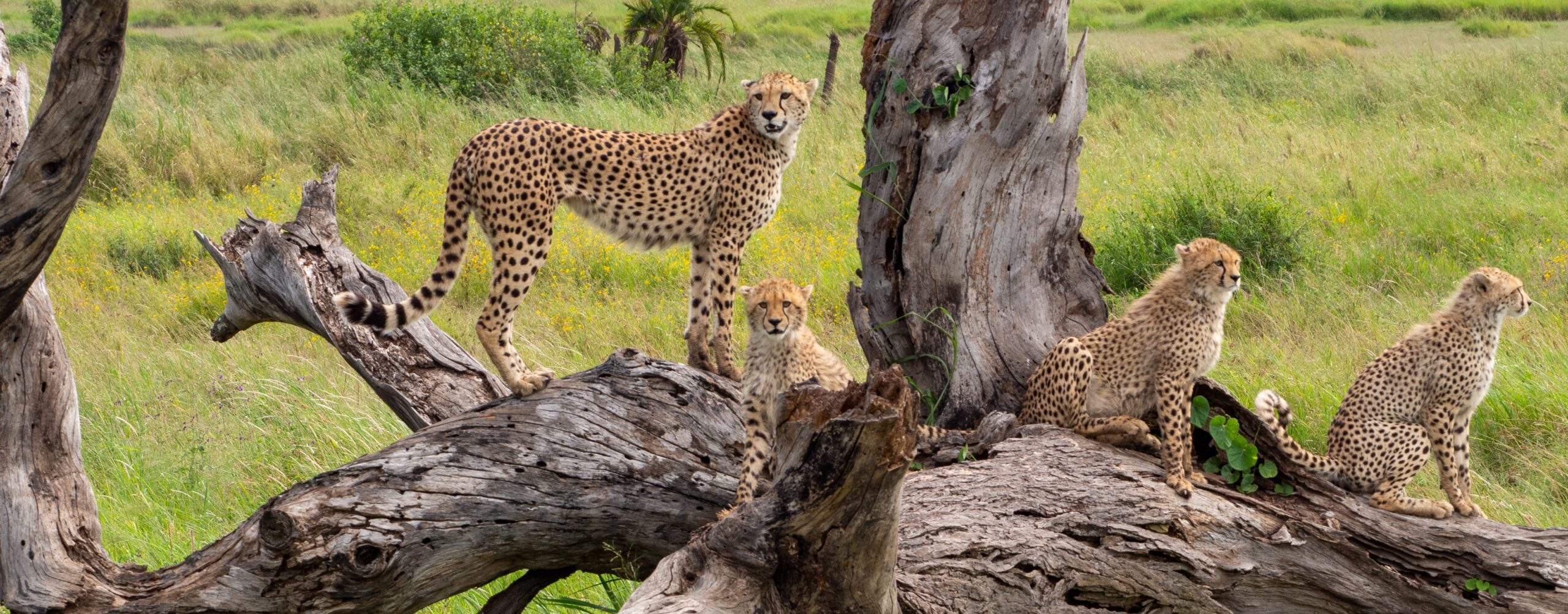 Climate and Best Times to Visit Tanzania
Climate and Best Times to Visit Tanzania